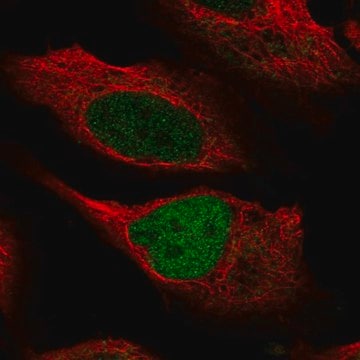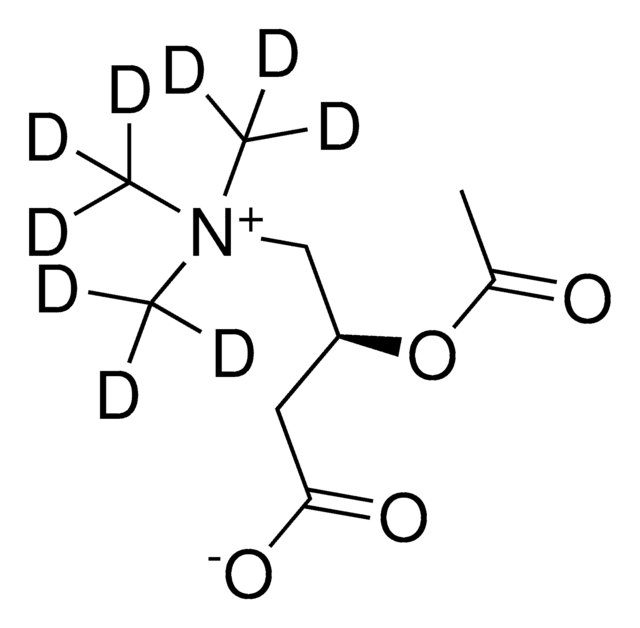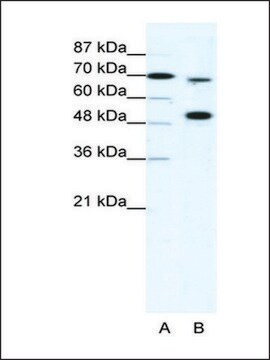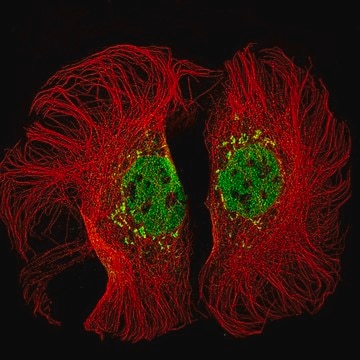ABE1867
Anti-MLL4 Antibody
from rabbit, purified by affinity chromatography
Synonym(s):
Histone-lysine N-methyltransferase 2D, ALL1-related protein, Lysine N-methyltransferase 2D, Myeloid/lymphoid or mixed-lineage leukemia protein 2
About This Item
Recommended Products
biological source
rabbit
Quality Level
antibody form
affinity isolated antibody
antibody product type
primary antibodies
clone
polyclonal
purified by
affinity chromatography
species reactivity
human, mouse
technique(s)
ChIP: suitable (ChIP-seq)
western blot: suitable
NCBI accession no.
UniProt accession no.
shipped in
ambient
target post-translational modification
unmodified
Gene Information
human ... KMT2D(8085)
General description
Specificity
Immunogen
Application
Epigenetics & Nuclear Function
Chromatin Immunoprecipitation (ChIP) Analysis: A representative lot detected MLL4 (MLL2) occupancy on the PPAR 1, but not the PPAR 2, proximal promoter in MEFs, while MLL4 enrichment was found on PPARγ1, PPARγ2, and C/EBP promoters in differentiating murine brown preadipocytes (Cho, Y.W., et al. (2009). Cell Metab. 10(1):27-39).
ChIP-Sequencing (ChIP-seq) Analysis: A representative lot detected MLL4 MLL4 genomic enrichment sites in a cell type- and differentiation stage-specific manner (Lee, J.E., et al. (2013). Elife. 2:e01503).
Immunoprecipitation Analysis: A representative lot immunoprecipitated MLL3/MLL4 complex components (UTX, PTIP, RbBP5 and PA1) and C/EBPβ, but not Menin, from mouse brown preadipocyte nuclear extracts prepared at day 2 of adipogenesis (Lee, J.E., et al. (2013). Elife. 2:e01503).
Quality
Western Blotting Analysis: A 1:5,000 dilution of this antibody detected 50 ng of recombinant human MLL4 fragment.
Target description
Physical form
Storage and Stability
Other Notes
Disclaimer
Not finding the right product?
Try our Product Selector Tool.
Storage Class Code
12 - Non Combustible Liquids
WGK
WGK 1
Certificates of Analysis (COA)
Search for Certificates of Analysis (COA) by entering the products Lot/Batch Number. Lot and Batch Numbers can be found on a product’s label following the words ‘Lot’ or ‘Batch’.
Already Own This Product?
Find documentation for the products that you have recently purchased in the Document Library.
Our team of scientists has experience in all areas of research including Life Science, Material Science, Chemical Synthesis, Chromatography, Analytical and many others.
Contact Technical Service








